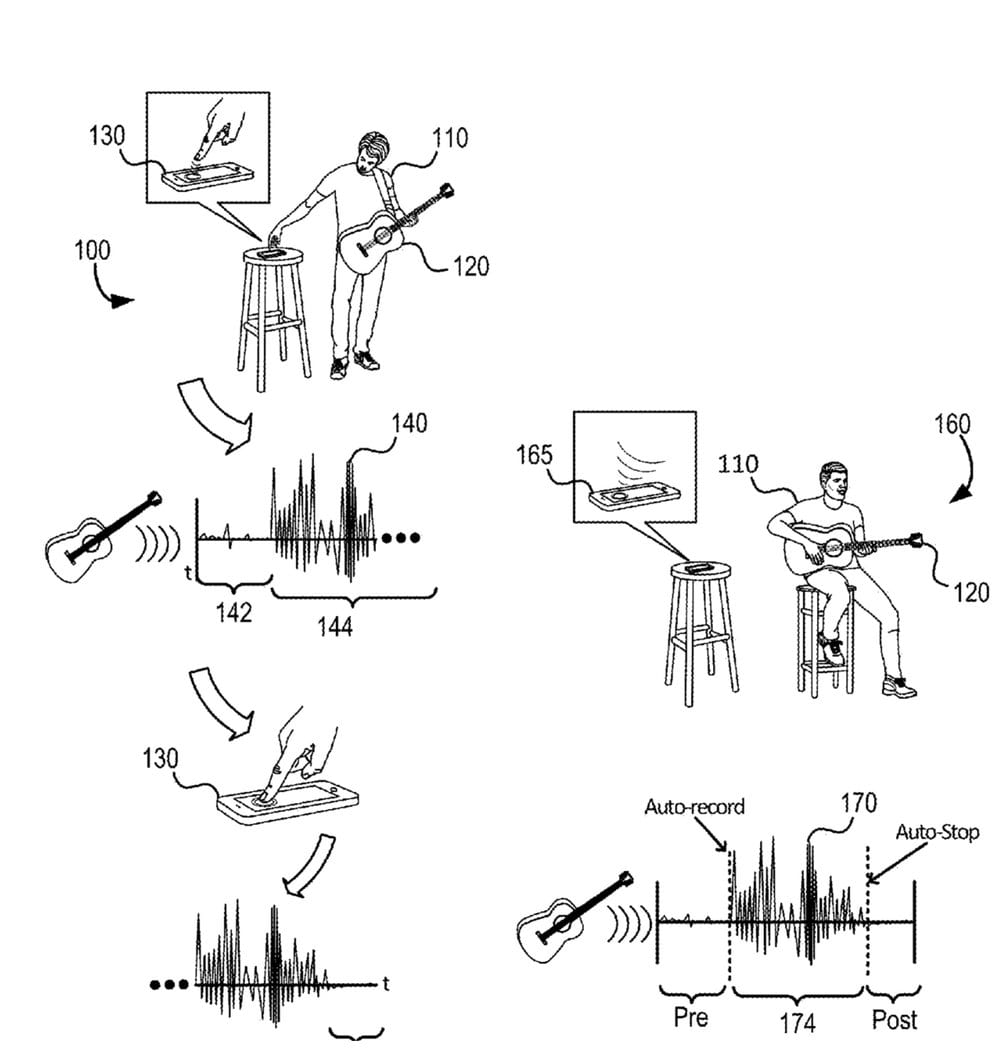Apple has filed for two patents designed to make it easier to record and author music on an iPhone or iPad. Patent number 20170092320) is for an “automatic music record and authoring tool.”
Audio recording capabilities have become more and more accessible to average users. Where musicians conventionally had to travel to recording studios to record their ideas, improvements in technology have brought cheaper and more sophisticated mobile recording devices to the masses, allowing musicians to record their ideas virtually anywhere and at a moment’s notice. Some contemporary recording devices are hand-held (e.g., mobile phones, voice memo recorders, etc.) for portability and convenience.

However, despite these improvements, Apple says there are several shortcomings with contemporary recording devices that stifle creativity. For instance, starting a recording session typically requires a user to navigate a number of menus and settings to place the device in the correct mode of operation and manually press a button to initiate a recording session. This can be cumbersome and repeated takes (track recordings) can interfere with the creative process, particular with off-the-cuff “scratch” recordings that may be used to capture inspired but fleeting musical ideas.
What’s more, these recordings may include unwanted sounds (e.g., talking, background noise, etc.) before and after the performance, which may need to be removed post-performance with editing software. Apple says improved recording devices and processes are needed.
Here’s a summary of the patent: “A method for automatically starting an audio recording that includes receiving audio data and dividing the audio data into a first set of consecutive segments and a second set of consecutive segments that occur after the first set. The method further includes analyzing the first set of segments by measuring an average energy and peak value for each segment of the first set and determining a silence score therefrom, and analyzing the second set of segments by measuring an average energy and peak value for each segment of the second set and determining an music score therefrom. The method begins a recording of the audio data if the silence score is above a first predetermined value and the music score is above a second predetermined value.”
Patent number 20170092248 is for an “automatic composer.” Methods and apparatuses are disclosed for automatically composing a song are disclosed.

Musical compositions are pieces of musical work that contain an arrangement of melody, harmony, and rhythm. Creators of such musical compositions are known as composers, who decide how the melody, harmony, and rhythm are arranged. Modern technology has advanced to assist composers in developing musical compositions. For instance, software applications have been developed to provide composers an interface with which musical pieces may be constructed and sampled (e.g., heard by the composer) in real time.
These types of software applications perform calculations on a digital representation of a musical piece which may be referred to as “music performance data.” The music performance data may then be manipulated by such software applications. Often, composers utilize modern technology to develop music compositions from beginning to end in one progression. Despite these technological advances, however, Apple says that modern technology limits composers’ abilities to experience different variations of their work, thereby stifling their creative potential. Accordingly, improvements to such modern technology are desired, the company says.
Of course, Apple files for — and is granted — lots of patents by the U.S. Patent & Trademark Office. Many are for inventions that never see the light of day. However, you never can tell which ones will materialize in a real product.



